If you’ve ever admired the stunning summer blooms of a crape myrtle but thought, “I just don’t have the space for one,” you’re not alone. These flowering trees are famous for their showy blossoms and colorful bark, but many people think they only come in towering sizes.
Good news: you don’t need a big yard to enjoy a crape myrtle’s charm. Thanks to selective breeding, there are now compact and dwarf varieties perfect for smaller spaces, courtyards, and even containers on patios. In fact, some stay under 5 feet tall yet bloom just as beautifully as their full-sized cousins.
In this guide, I’ll share the best crape myrtle varieties for small yards, how to care for them, and how to make them thrive, even if your garden is cozy or urban-sized.
Table of Contents
Why Variety Selection Matters
Choosing the right crape myrtle variety isn’t just about color, it’s about size, growth habit, and climate compatibility.
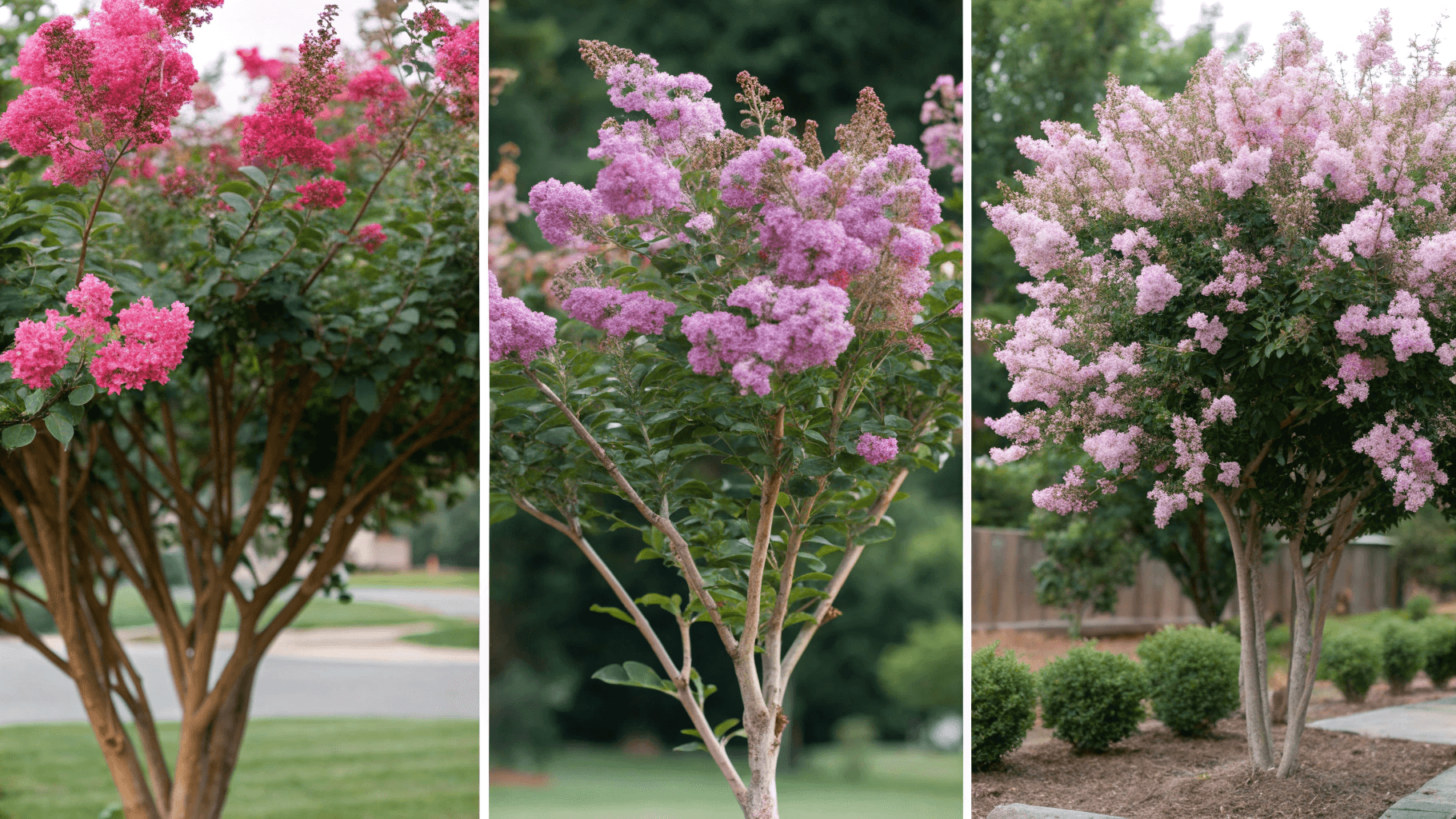
Crape myrtles (Lagerstroemia indica and hybrids) come in all shapes and sizes. While traditional types can reach over 20 feet tall, compact and dwarf cultivars stay much smaller, making them ideal for tight garden spaces, walkways, or small front yards.
The right choice will:
- Prevent overcrowding or root competition in limited garden beds
- Reduce pruning needs
- Allow you to pair them easily with other plants
- Fit perfectly in decorative containers or raised beds
When you pick a variety suited to your space and region, you’ll have fewer maintenance headaches and a healthier, longer-living plant.
TIP: Before choosing, check your USDA Plant Hardiness Zone and note how much sun your garden receives. Most crape myrtles thrive in zones 6–10 with full sun (6+ hours daily).
Top 8 Compact & Dwarf Crape Myrtle Varieties for Small Yards
Here’s a list of some of the most popular and proven compact crape myrtle varieties. Each offers something special, from flower color to growth habit.
1. ‘Pocomoke’
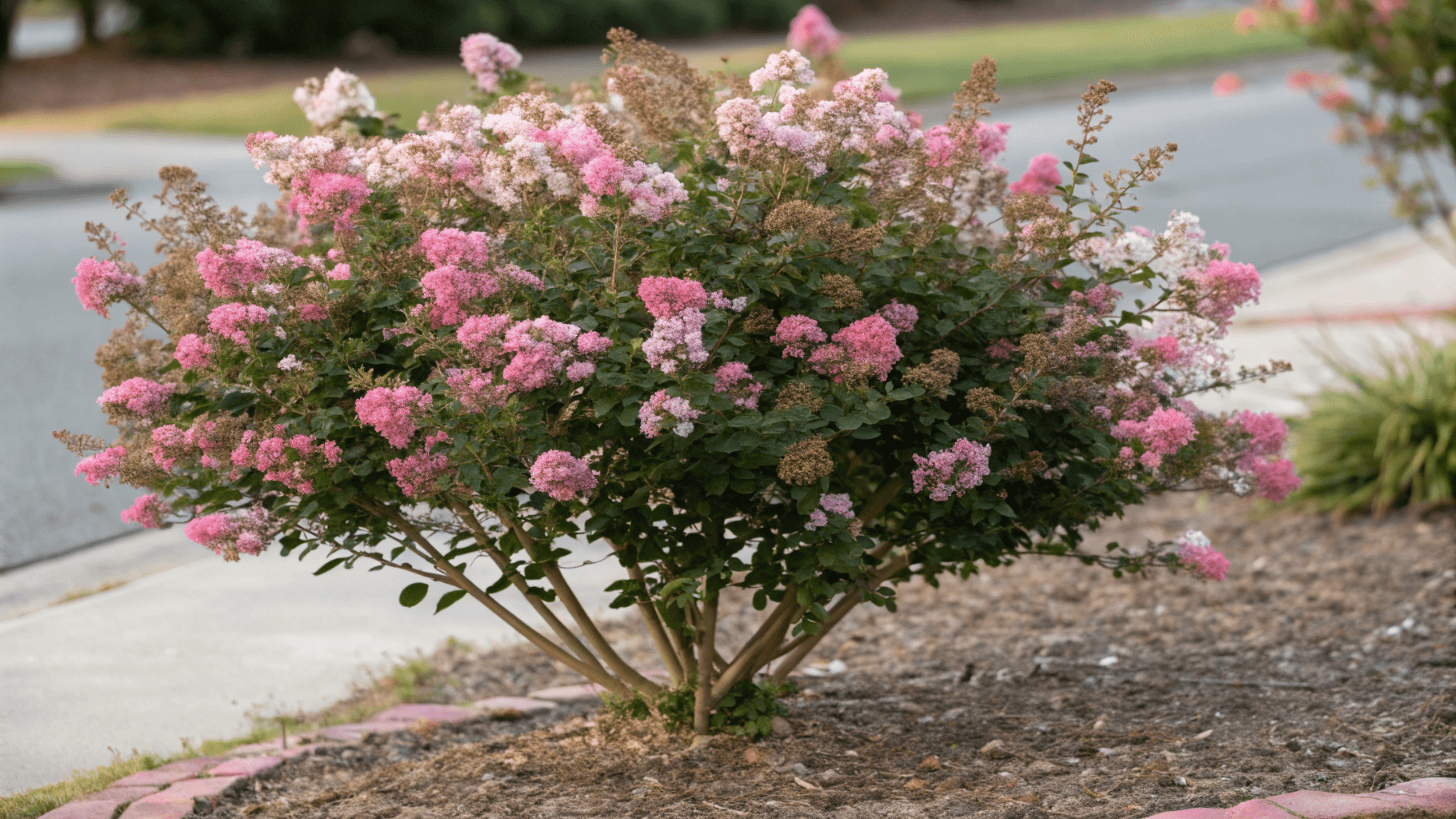
- Mature Size: 2–3 feet tall, 3–4 feet wide
- Bloom Color: Deep rose-pink
- Ideal Zones: 7–9
This ultra-compact variety is one of the smallest crape myrtles available. It’s perfect for containers or borders. ‘Pocomoke’ blooms from midsummer through early fall and forms a neat, mound-like shape that rarely needs pruning.
2. ‘Chickasaw’
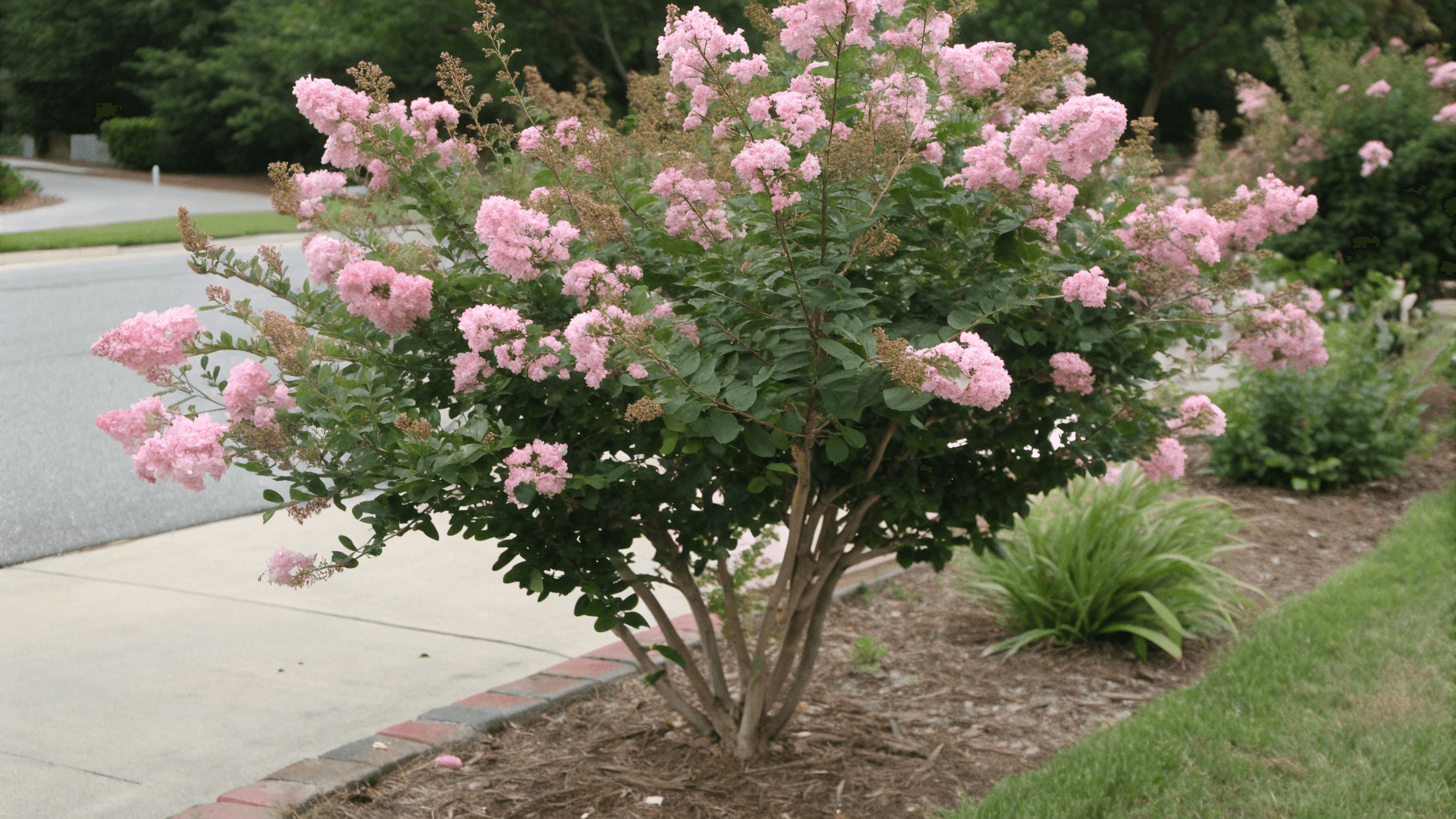
- Mature Size: 2-3 feet tall, 3 feet wide
- Bloom Color: Soft pink
- Ideal Zones: 6–9
‘Chickasaw’ is part of the U.S. National Arboretum’s dwarf series, known for its disease resistance. It’s an ideal option for rock gardens, walkways, or container planting.
3. ‘Delta Jazz’ (also known as ‘Chocolate Mocha’)
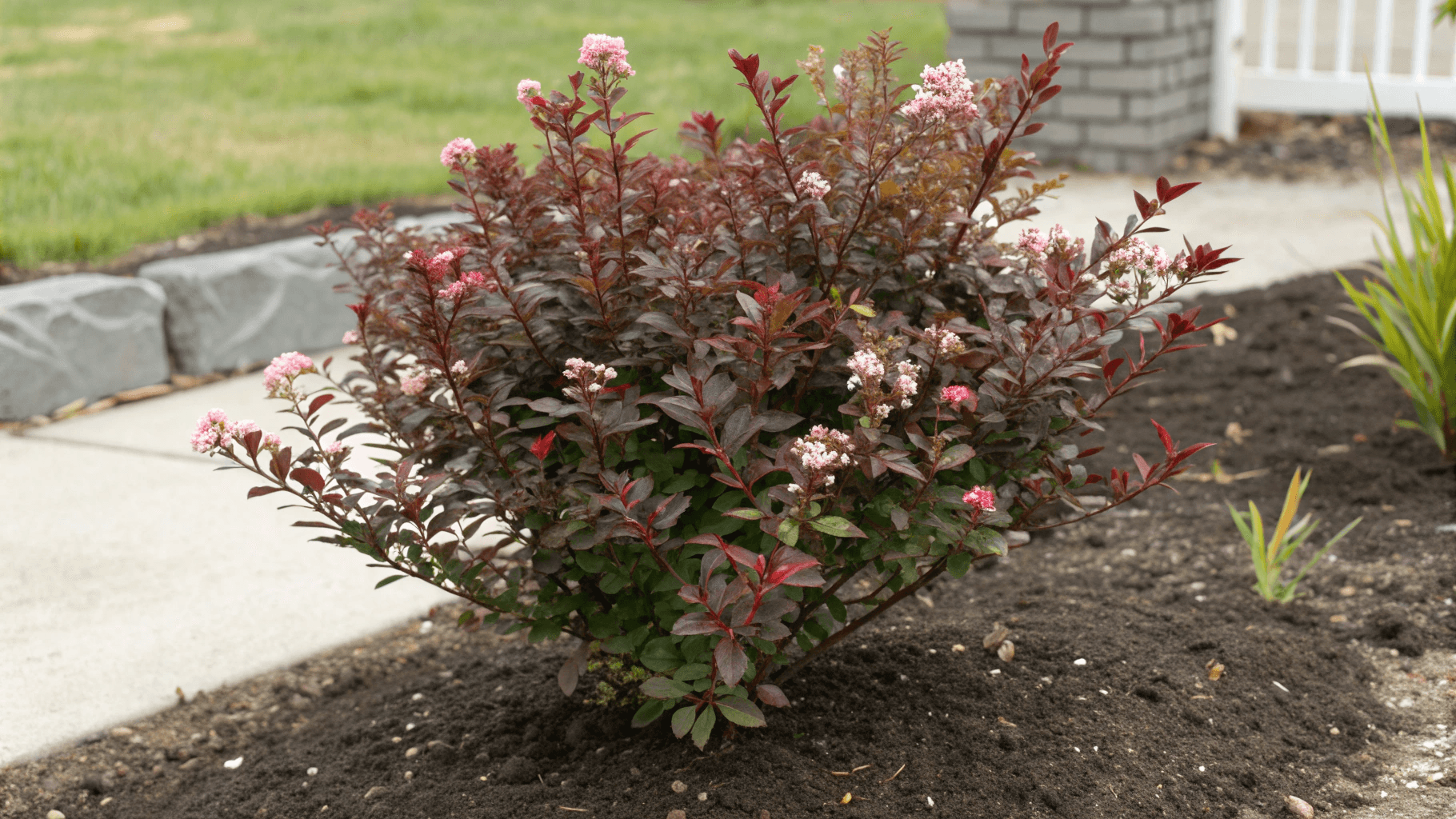
- Mature Size: 8–12 feet tall, 4-6 feet wide
- Bloom Color: Vibrant pink
- Ideal Zones: 7–9
If you want something compact but with a little height for privacy or structure, ‘Chocolate Mocha’ is your pick. Its unique dark burgundy foliage provides dramatic contrast even when it’s not in bloom.
4. ‘Tightwad Red’
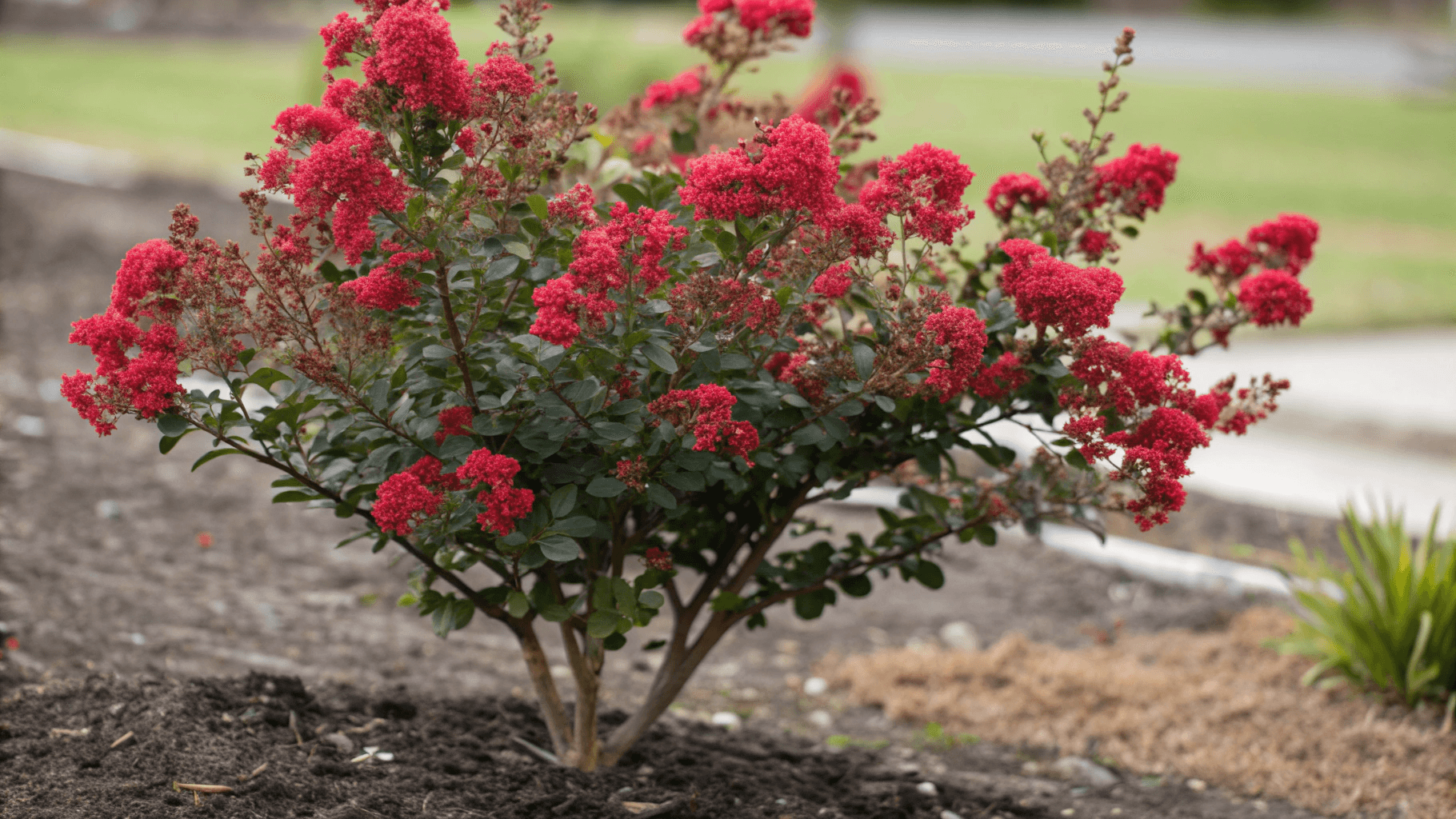
- Mature Size: 3–5 feet tall
- Bloom Color: Red
- Ideal Zones: 7–9
As the name suggests, this variety stays tight and compact, no sprawling growth here! Its striking red flowers pop beautifully against deep green leaves.
5. ‘Acoma’
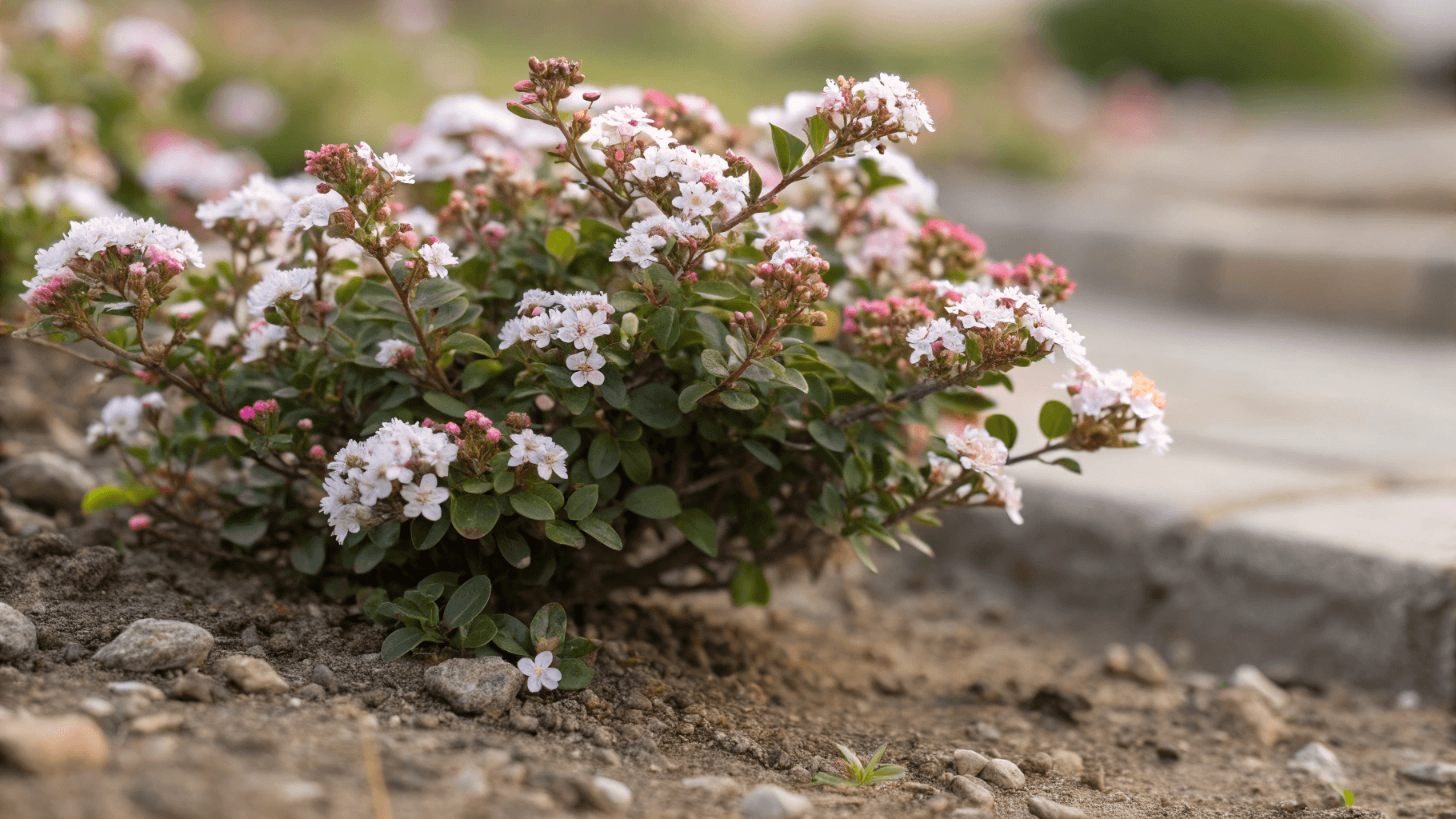
- Mature Size: 8–10 feet tall
- Bloom Color: White
- Ideal Zones: 7–9
‘Acoma’ is technically a semi-dwarf variety. It has an elegant, arching form and produces large clusters of white blooms. It’s an excellent choice if you want a small tree that still makes a statement.
6. ‘Dazzle Me Pink’
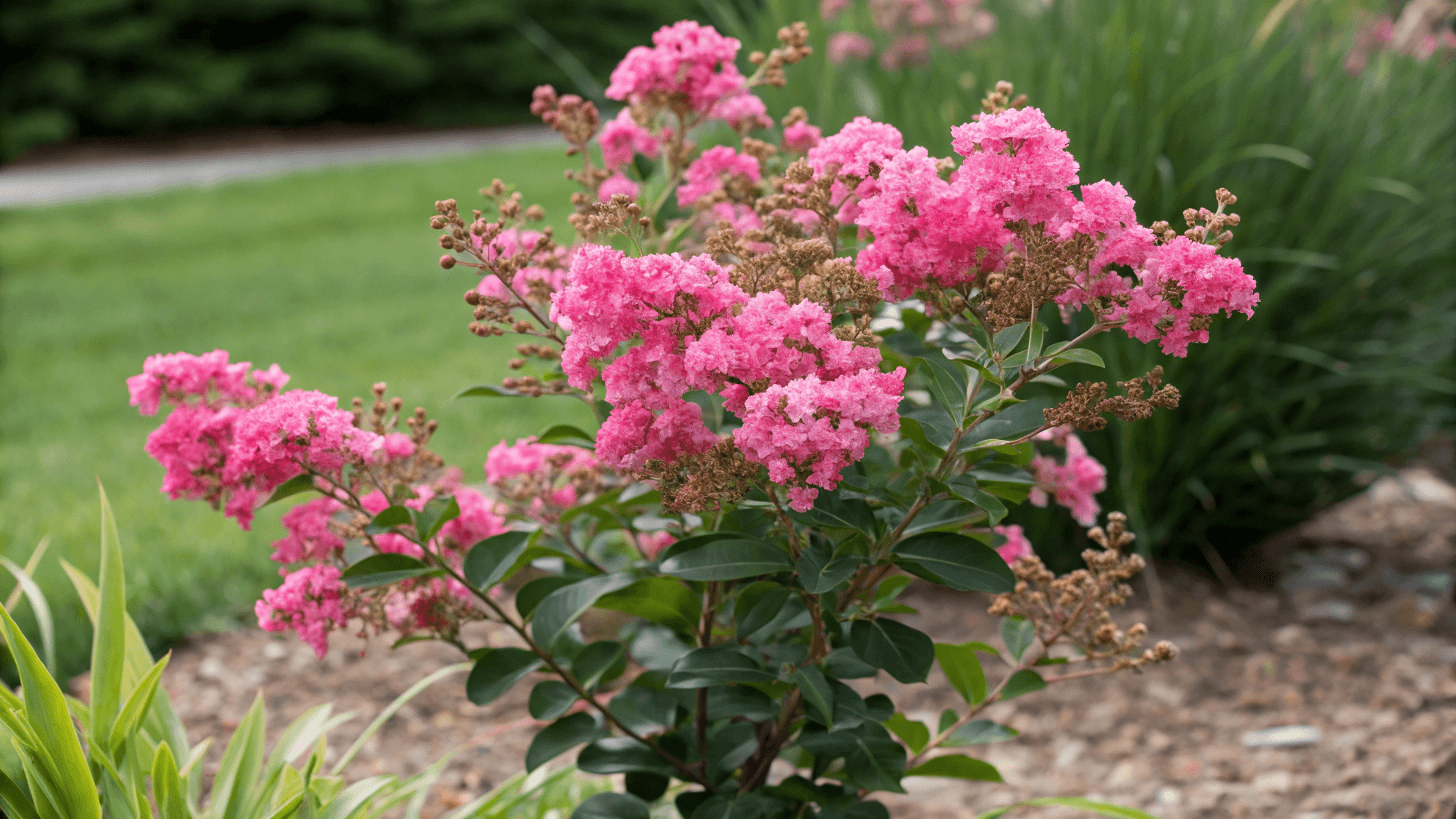
- Mature Size: 3–5 feet tall
- Bloom Color: Bubblegum pink
- Ideal Zones: 6–10
Part of the Razzle Dazzle series, this compact variety is both low-maintenance and mildew-resistant. It’s perfect for creating cheerful borders or grouping with other small shrubs.
7. ‘Victor’
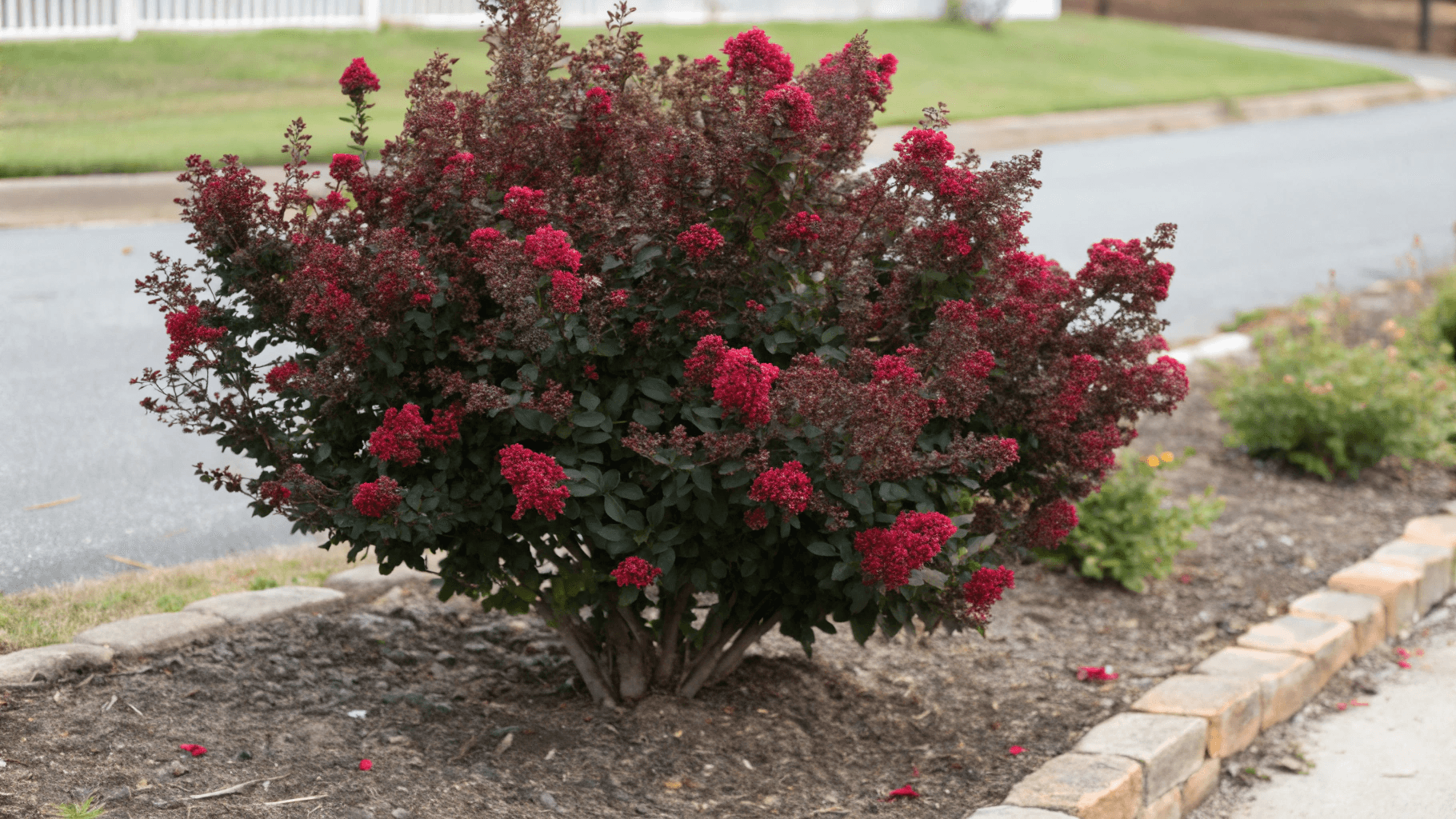
- Mature Size: 4–6 feet tall, 6 feet wide
- Bloom Color: Crimson red
- Ideal Zones: 6–9
‘Victor’ is a true dwarf crape myrtle that brings deep red color to the landscape. Its small stature and dense shape make it perfect for foundation plantings or accent corners.
8. ‘Catawba’
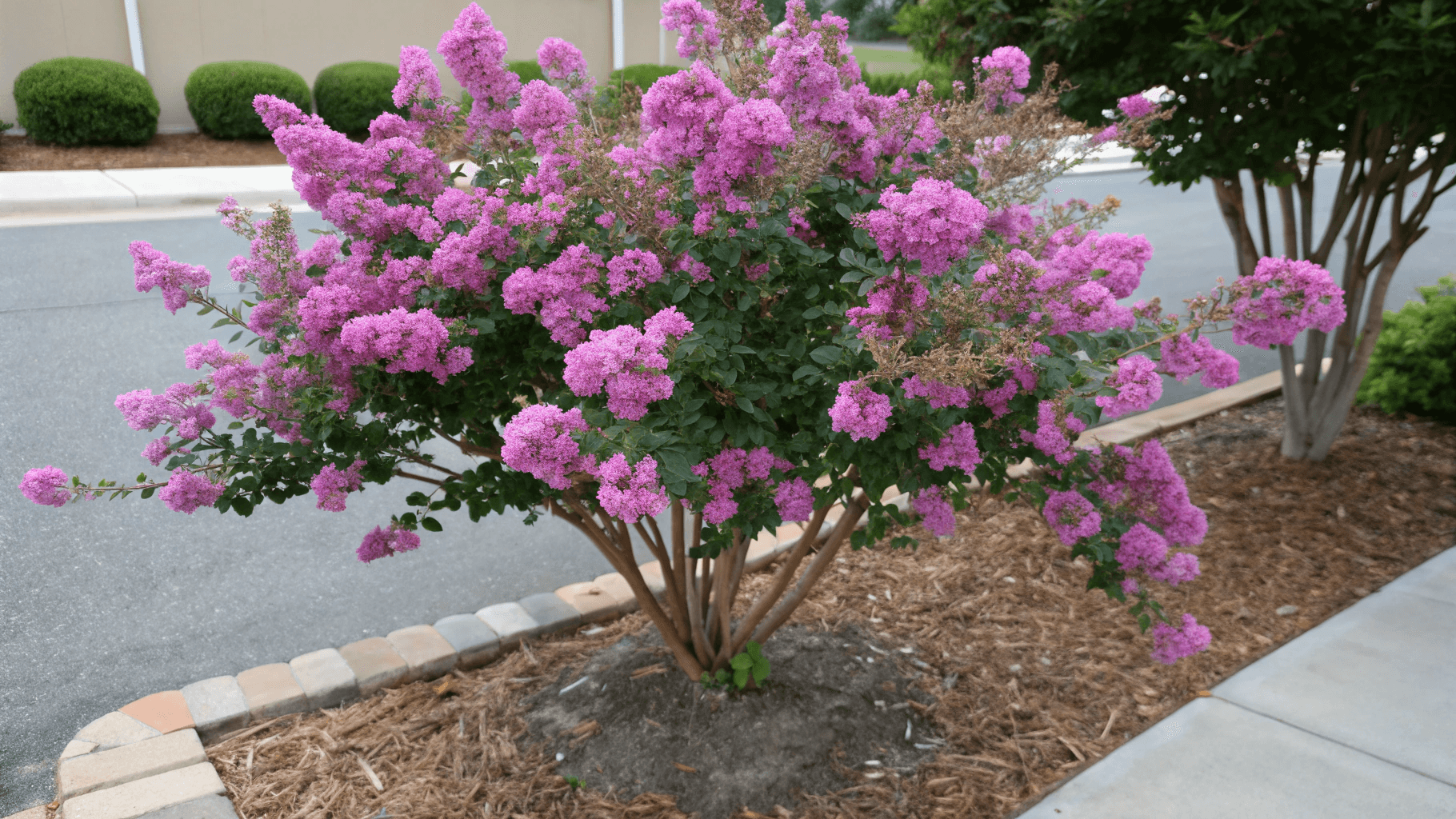
- Mature Size: 8–10 feet tall, 10 feet wide
- Bloom Color: Purple-violet
- Ideal Zones: 7–10
‘Catawba’ is a classic small crape myrtle with strong purple blooms. It’s a bit taller than most dwarfs, but still compact enough for medium-sized yards or as a centerpiece in a small garden.
Bonus: Read my full article about “When and Where to Plant a Crape Myrtle in USA“
How to Care for Smaller Varieties vs. Standard Types
Compact crape myrtles need the same care principles as their larger cousins, but on a smaller scale. The good news is that they’re lower maintenance overall.
1. Sunlight & Soil
Dwarf types love full sun, just like larger varieties. Plant them in well-draining soil and avoid overly shaded areas, which can reduce flowering.
2. Watering
When newly planted, water regularly for the first few months to establish strong roots. Once mature, crape myrtles are drought-tolerant, but an occasional deep watering during dry spells keeps them happy.
3. Fertilizing
Feed your crape myrtle in early spring before new growth begins. A slow-release, balanced fertilizer works best. If you’re unsure which to use, check out this helpful guide on the Best Fertilizers for Crape Myrtle.
4. Pruning
Smaller varieties rarely need heavy pruning. Just remove spent flowers, dead wood, or crossing branches. For step-by-step techniques, see my guide on Pruning Crape Myrtle.
5. Winter Protection
In colder zones (6 and below), apply mulch around the base to protect roots from frost. Dwarfs in containers can be moved into sheltered spots during winter.
Spacing & Companion Plants for Small Gardens
Compact crape myrtles give you flexibility in tight spaces, but spacing still matters.
- For 2–3 ft dwarf types, leave about 3 feet between plants.
- For 6–10 ft semi-dwarfs, leave 5–6 feet between each one.
This spacing allows airflow and reduces mildew or disease risk.
Great companion plants for dwarf crape myrtles include:
- Lantana (for matching summer blooms)
- Salvia (adds purple and attracts pollinators)
- Daylilies (offer contrasting foliage)
- Dwarf boxwoods (provide evergreen structure)
Pairing these plants enhances both color and texture, creating a balanced, lush garden even in small spaces.
Tips for Container Planting Dwarf Types
If you’re short on ground space or have only a patio or balcony, container gardening is a fantastic option. Here’s how to do it right:
- Choose the Right Pot: Pick a container at least 16–20 inches wide with drainage holes.
- Use Quality Soil: Use a lightweight, well-draining potting mix, not garden soil.
- Water Consistently: Container-grown crape myrtles dry out faster. Water when the top inch of soil feels dry.
- Feed Smartly: Apply a slow-release fertilizer in early spring or a liquid feed every 4–6 weeks during the growing season.
- Repot Every Few Years: Every 2–3 years, refresh the soil and trim the roots slightly to keep your plant healthy.
Container planting also lets you experiment with placement – move your crape myrtle into the spotlight when it’s in full bloom, or to a sheltered corner when the weather gets harsh.
Conclusion
You don’t need a large yard to enjoy the vivid color and charm of crape myrtles. With so many compact and dwarf varieties, there’s one for every space and style, from vibrant reds like ‘Victor’ to elegant whites like ‘Acoma.’
By choosing the right variety, planting in the right spot, and following simple care steps, you can enjoy lush summer blooms year after year, no matter how small your garden may be.
If you’re feeling inspired to add one to your space, now’s the perfect time to start planning!
Bonus: Read my full article “10 Best Trees for Small Front Yards” to find more ideas for your front yard.

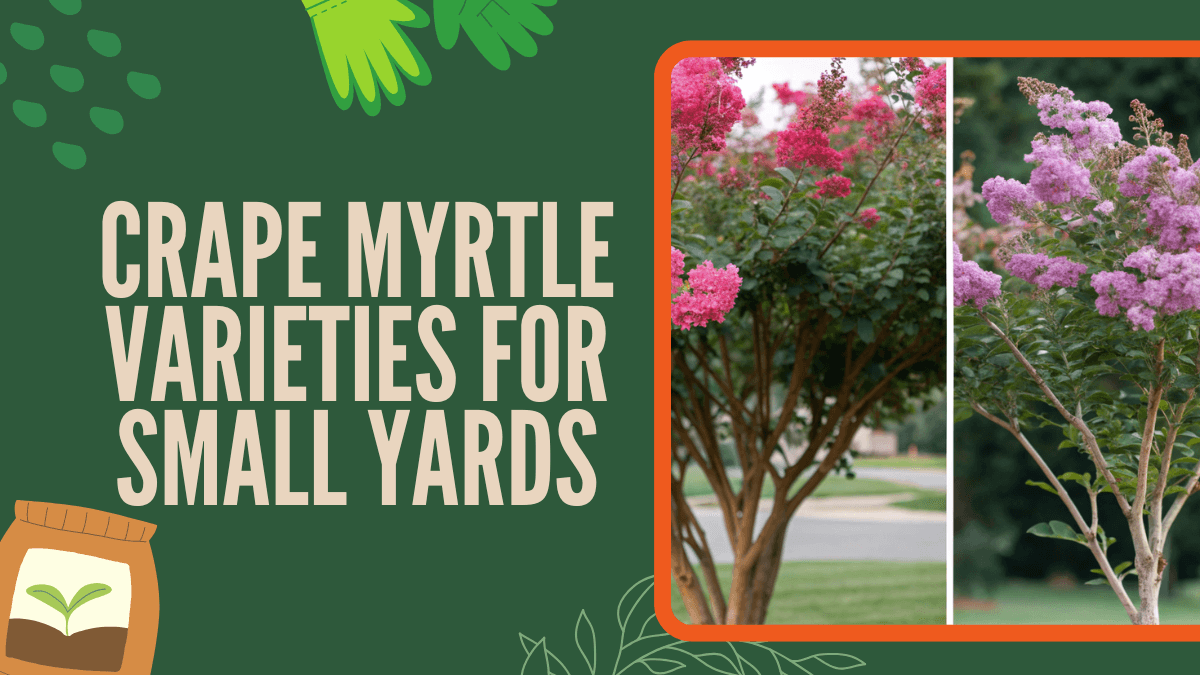
 ChatGPT
ChatGPT
 Perplexity
Perplexity
 Claude
Claude
Leave a Reply